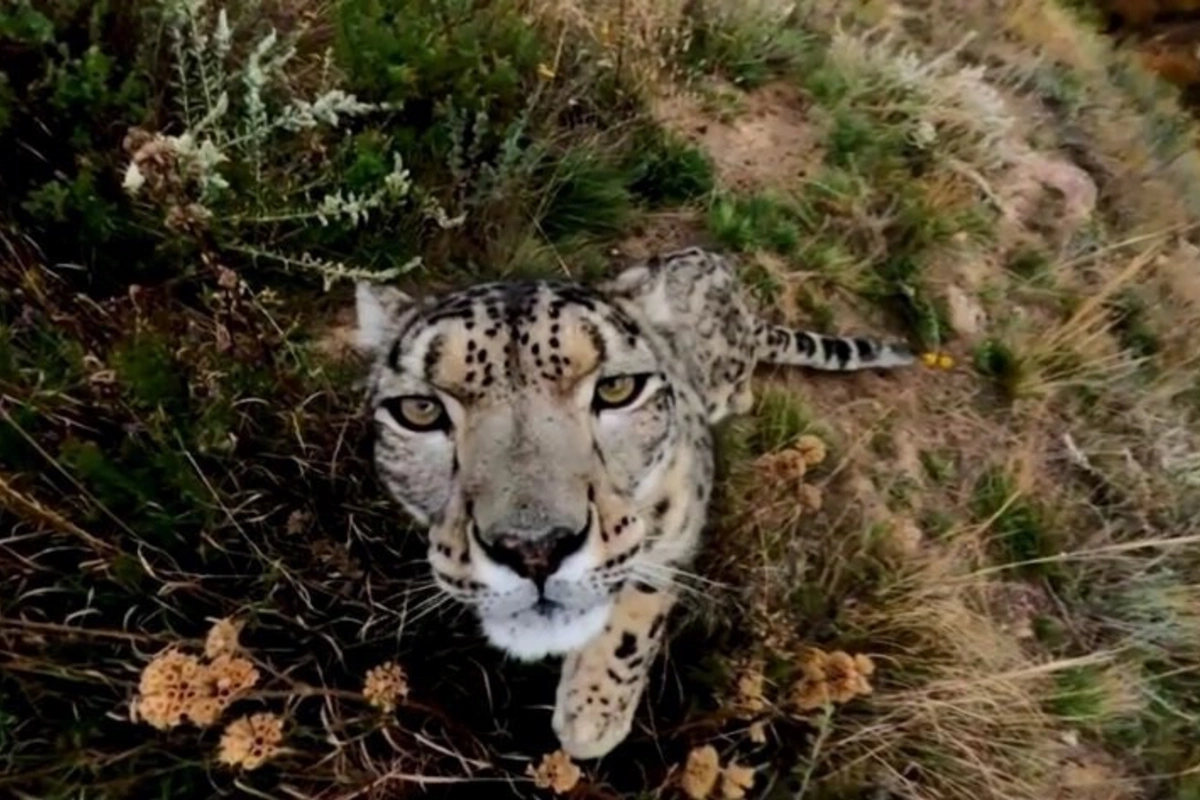
You might not associate leopards with the Caspian countries, but in fact there are two distinct sub-species in the region. Both are very rare, but naturalists and photographers have been gathering ever more evidence of their survival.
Image: Screengrab from a video by UN Environment Programme
In 2018 I had the privilege of doing a two-day hike through Azerbaijan’s glorious Hirkan National Park. We started from the hot springs near Astara, climbed through Tolkienesque forests surreally thick with moss, and stayed overnight in a roadless village that doesn’t appear on any map. The experience was unforgettable but made all the more memorable by our guide – the locally famed Babakhan, who has become widely nicknamed the “Leopard Man.” You could easily believe that this is due to his lithe physique, his way of bounding almost noiselessly through woodlands and his habit of leaping up trees. On a couple of occasions, we came across him watching us from the treetops, where he lay in apparent comfort on a branch, just as a leopard might.
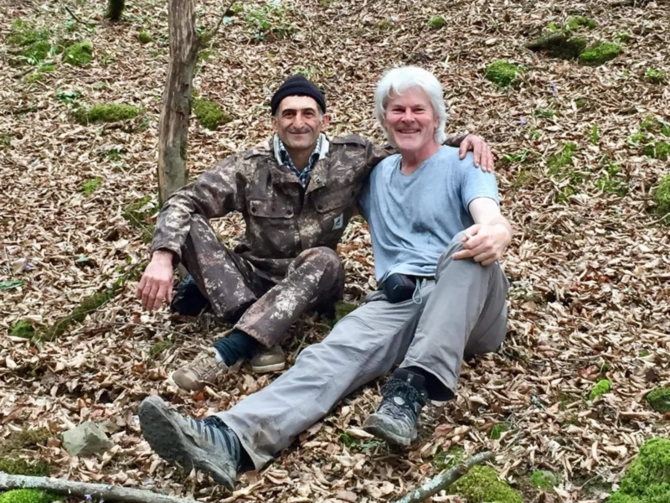
Mark and Babakhan the “Leopard Man” near Astara, Azerbaijan in 2018. Image: Mark Elliott
But he became known as the ‘Leopard Man’ for an entirely different reason. For years he had been a hunter, but one day he was cornered by the very leopard that he had initially set out to kill. Man and cat ended up wrestling face to face in what Babakhan knew would end in his death. Except he survived – at a crucial moment, the two bodies fell down a steep slope, and the leopard bounded off, leaving Babakhan bleeding but whole. This was an epiphany, and following that, Babakhan turned into a valiant leopard protector. So it was to him that a National Geographic film crew turned when photographer Adrian Steirn set about a laborious quest to capture the first-ever footage of one of Europe’s last leopards. The result was a fascinating documentary.
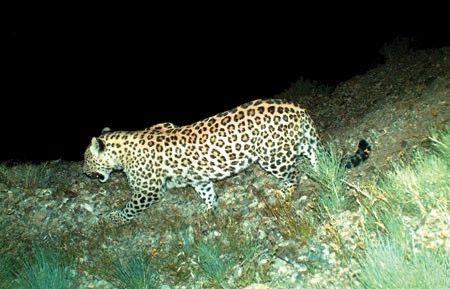
Image: vision.az
The cat in question was the Panthera pardus tulliana, the highly endangered Persian Leopard (aka Caucasian Leopard) - the sole leopard species to inhabit the Caucasus. There have been rare sightings in all three South Caucasian countries, but only around a dozen animals are now estimated to live in both Azerbaijan and Armenia, with perhaps five in Georgia. However, there could be as many as 800 in Iran, where over 60 animals have been reported killed by humans since 2007. That was mostly by herders trying to protect their livestock, though poaching has also taken leopards, and roughly one a year dies as a result of being hit by vehicles in the Golestan National Park. In turn, thirty people have been injured and one killed by leopards in Iran over the last decade: in all known cases, herders having disturbed unsuspecting leopards.
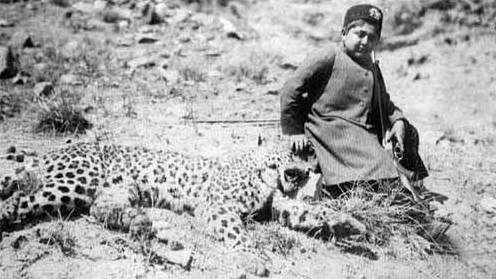
Though leopards are still occasionally killed by human hunters, this is almost never as sport – unlike the situation a century ago. This photo from 1900 shows the young Qajar Shah Ahmad Mirza with a leopard trophy.
In recent years, Iran has been making significant steps towards leopard conservation, especially within the Sefidkouh Protected Zone in Lorestan Province, where park rangers, surveillance systems and environmental checkpoints seem to have helped. In 2021 camera traps captured several images of leopards in the zone’s highland areas.
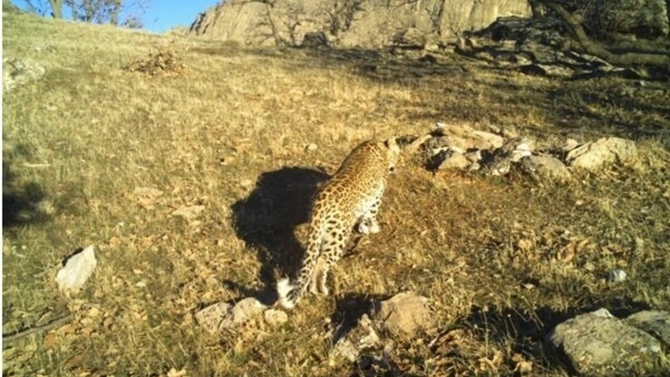
A Persian Leopard in the Sefidkouh Protected Zone Image: MEHR News
At least four Persian Leopards in the Tandooreh National Park of northeastern Iran have now been tagged with tracker collars allowing environmentalists to better monitor their movements. Thanks to one of these collars, researchers discovered that one of those leopards had become an international traveller, crossing the border into nearby Turkmenistan. While the lack of a passport is no great impediment for a leopard, the journey was remarkable for having crossed roads several times and taking the leopard close to a village without anyone (but the tracker device) noticing.
Elsewhere in Central Asia, camera traps have been capturing new and dramatic images of rare Snow Leopards, the Caspian Region’s only other leopard species. Also known as the Ounce, the Snow Leopard (Panthera uncia ) has an unusually long, bushy tail which helps with balance. Though the species is more commonly associated with China and the Himalayas, the far western limits of its distribution had long been thought to extend into southeastern areas of the former USSR. In the last decade, a concerted attempt to document them has been increasingly bearing fruit.
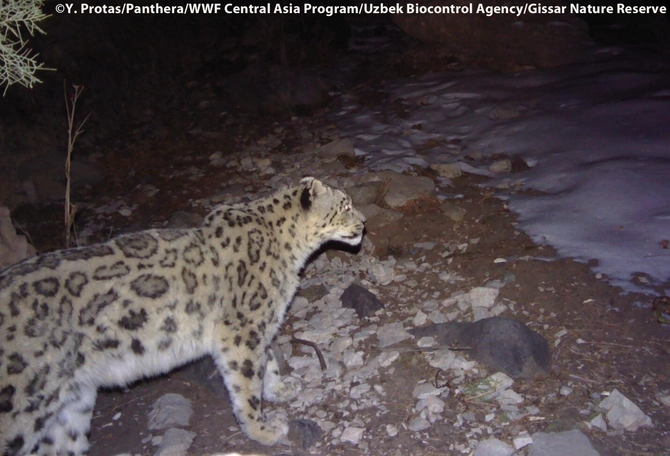
The 2013 snow leopard sighting in Uzbekistan’s Gissar Nature Reserve, ©Y. Protas/Panthera/WWF Central Asia Program/Uzbek Biocontrol Agency/Gissar Nature Reserve.
In 2013, a single individual Snow Leopard was caught on camera for the first time in Uzbekistan, in the Kizilsu area of the Gissar National Park. The same project also recorded a wealth of other rare species, including a Eurasian Lynx, which, though less threatened globally, was confusingly once also known as an Ounce. Uzbekistan’s Snow Leopards are now thought to number between 20 and 50, less than 1% of the world’s surviving population though only two have so far been filmed.
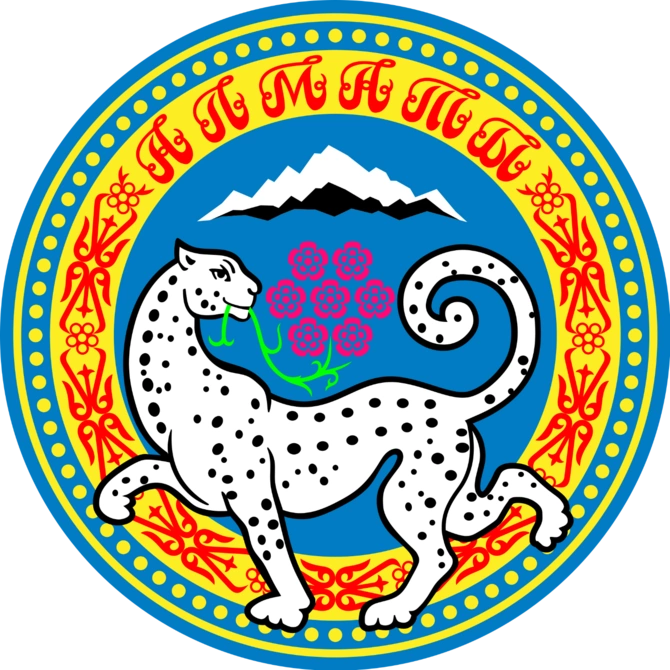
The Snow Leopard as it appears on Almaty’s coat of arms
In Kazakhstan, the snow leopard (‘Ak Bars’) is widely seen as a symbol of grace and prestige, and appears in heraldic form on the coat of arms of Almaty – Kazakhstan’s biggest city and former capital. Around 120 individuals are thought to remain in the country, most notably in the Aqsu-Zhabaly State Reserve. That’s Central Asia’s oldest such reserve, near the triple point where Kazakhstan, Kyrgyzstan and Uzbekistan meet, leading to efforts to improve cross-border coordination of conservation efforts. Occasional sightings of leopards here include one that was caught on camera in 2020.
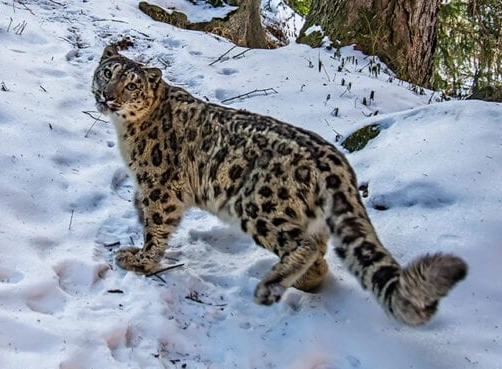
Snow leopard in Kazakhstan. Image: Wildlife Without Borders, Kazakhstan. Image: caravan.kz
A potential problem here is that the leopards tend to migrate east during the year, some passing perilously close to the greater conurbation of Almaty. A study initiated in 2020, part of the IUCN Save our Species programme for Central Asia, aims to look into the leopards’ lifestyle in the context of growing interaction with urbanization.
Snow leopard numbers are significantly higher in neighbouring Kyrgyzstan, where a traditional honorific, “Barsbek,” means “Lord of Leopards,” dating back to a 7th-century ruler of the Yenisei-Kyrgyz Khaganate. Since 2016, Kyrgyzstan’s former Shamshy hunting reserve has been transformed into a fully protected sanctuary for leopards and their favoured prey, argali and ibex, both wild relatives of sheep and mountain goats whose magnificent horns lead them to be prized as trophies by human hunters.
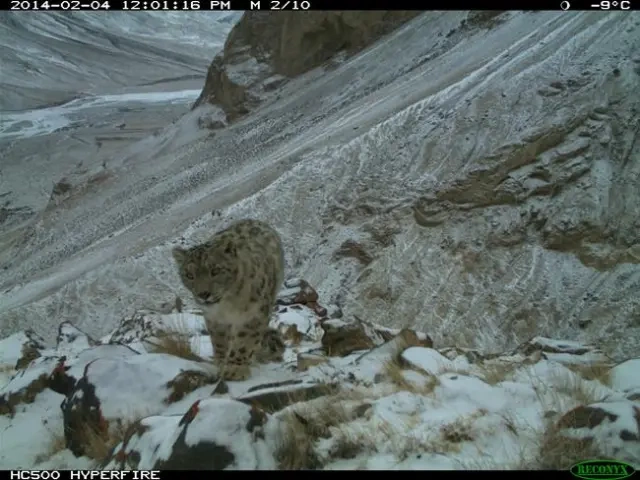
In the Sarychat-Ertash Nature Reserve, winter conditions show how well the snow leopard’s camouflage is adapted. Image: SLF Kyrgyzstan / SLT
Elsewhere in Kyrgyzstan, some fabulous leopard photos have been captured by traps in the Sarychat-Ertash Nature Reserve, where another leopard tagging programme is underway, part of a regional conservation that big-cat charity Panthera sees as creating a “stronghold for the species.”
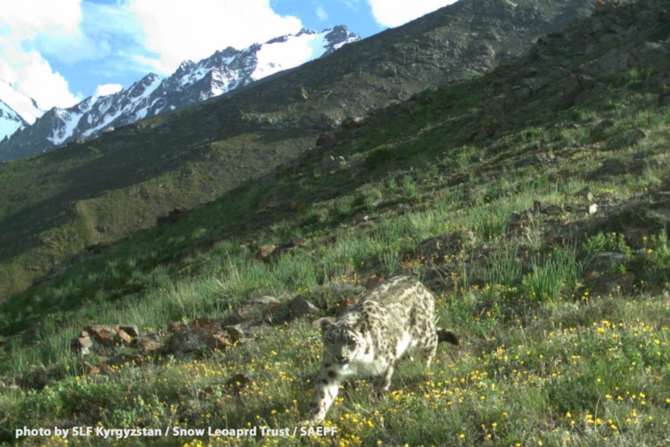
The Snow Leopard Trust, a US-based international charity working to save the species worldwide, is represented in Kyrgyzstan, and its website has a fine collection of photos.
But perhaps the most impressive of all recent video captures was that by Philippe Matteini, with a series of images that show a slightly confused Snow Leopard making a couple of attempts to test the edibility of the GoPro camera.
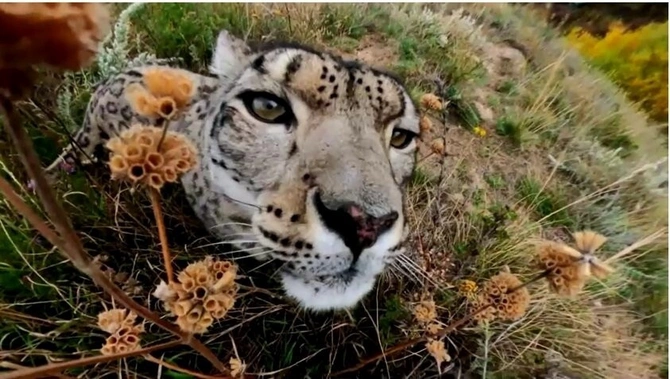
Image: Screengrab from a video by UN Environment Programme
Leopards might be very rare in the Caspian Region, but they are much loved and increasingly valued by locals and foreigners alike. Perhaps it is not too late to save them.
Share on social media